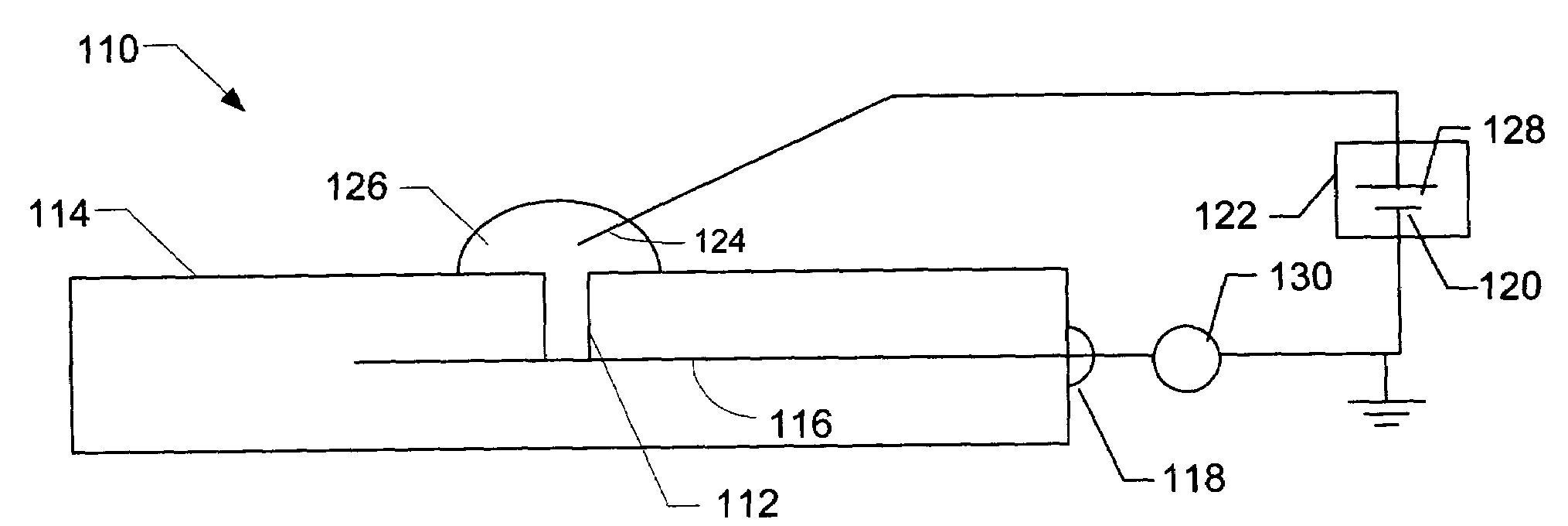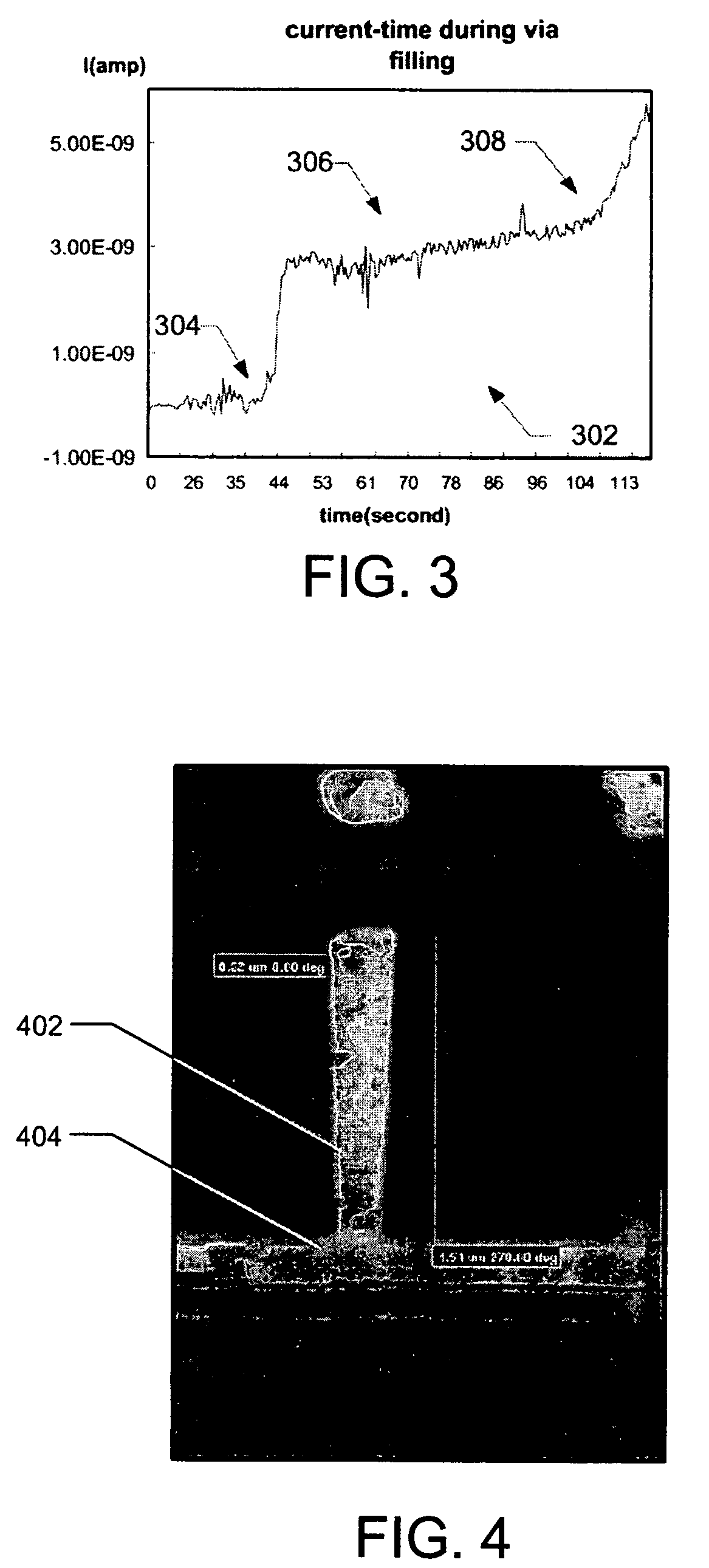System for modifying small structures using localized charge transfer mechanism to remove or deposit material
a charge transfer mechanism and small structure technology, applied in the field of nanotechnology, can solve the problems of not working exactly as expected, often not solving problems, and taking weeks or months to have the redesigned device produced, and achieve the effect of low resistan
- Summary
- Abstract
- Description
- Claims
- Application Information
AI Technical Summary
Benefits of technology
Problems solved by technology
Method used
Image
Examples
Embodiment Construction
[0033]Several preferred embodiments of the invention are applicable to the field of “circuit editing,” that is, adding or removing electrical paths to change the connections in an integrated circuit by a heterogeneous electron charge transfer mechanism, such as electrodepositing or electroetching. In particular, the invention is useful for filling vias, severing metallic lines through high-aspect ratio vias, and rapidly creating conductive lines.
[0034]Some embodiments of the invention can be used to deposit metals that are substantially pure. Metals deposited in accordance with the invention can have resistivities that are forty or more times lower than the resistivities of existing FIB-deposited tungsten and platinum materials, and ten times lower than the resistivity of FIB-deposited copper conductive materials.
[0035]In some embodiments, the invention can be practiced in air, outside a vacuum chamber. In other embodiments, the invention can be practiced within a vacuum chamber use...
PUM
| Property | Measurement | Unit |
|---|---|---|
| diameter | aaaaa | aaaaa |
| diameter | aaaaa | aaaaa |
| depth | aaaaa | aaaaa |
Abstract
Description
Claims
Application Information
 Login to View More
Login to View More - R&D
- Intellectual Property
- Life Sciences
- Materials
- Tech Scout
- Unparalleled Data Quality
- Higher Quality Content
- 60% Fewer Hallucinations
Browse by: Latest US Patents, China's latest patents, Technical Efficacy Thesaurus, Application Domain, Technology Topic, Popular Technical Reports.
© 2025 PatSnap. All rights reserved.Legal|Privacy policy|Modern Slavery Act Transparency Statement|Sitemap|About US| Contact US: help@patsnap.com



